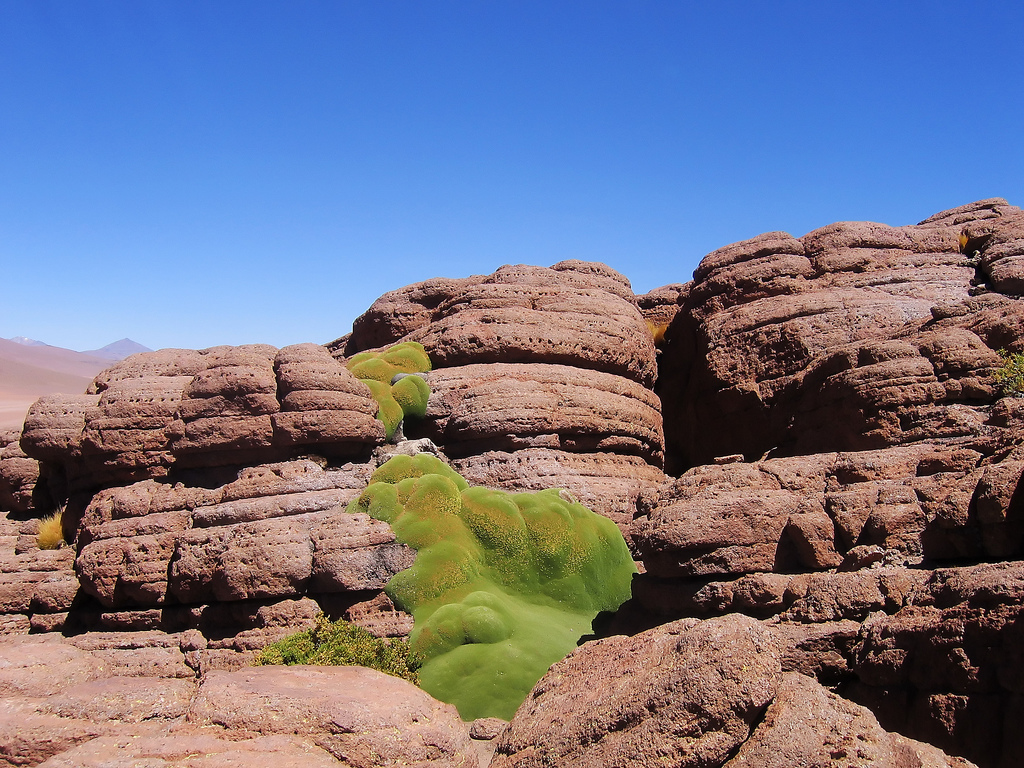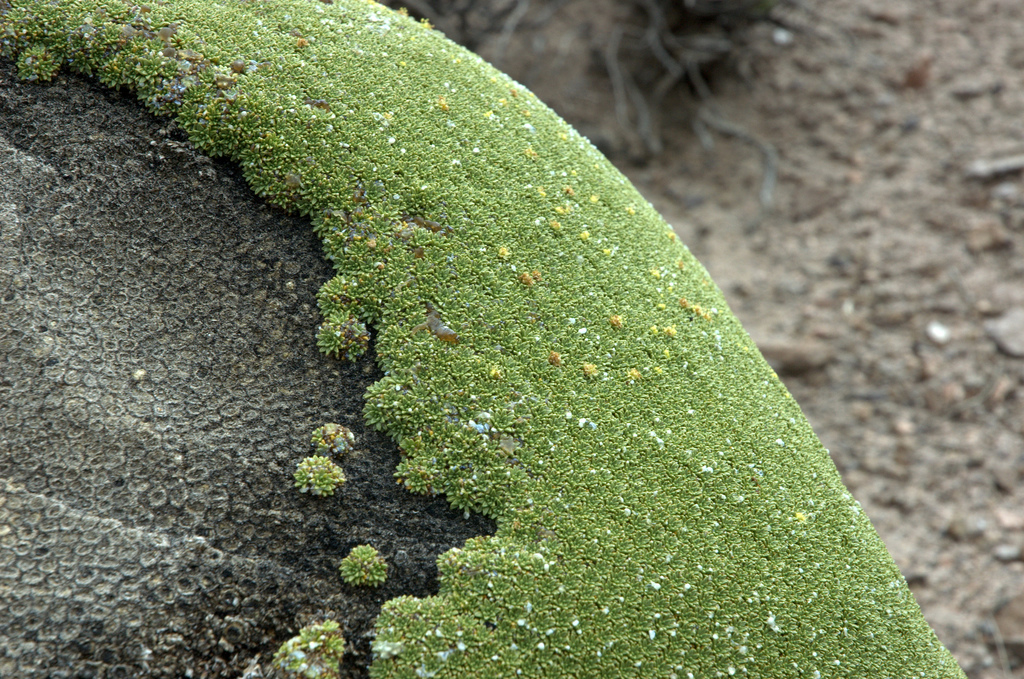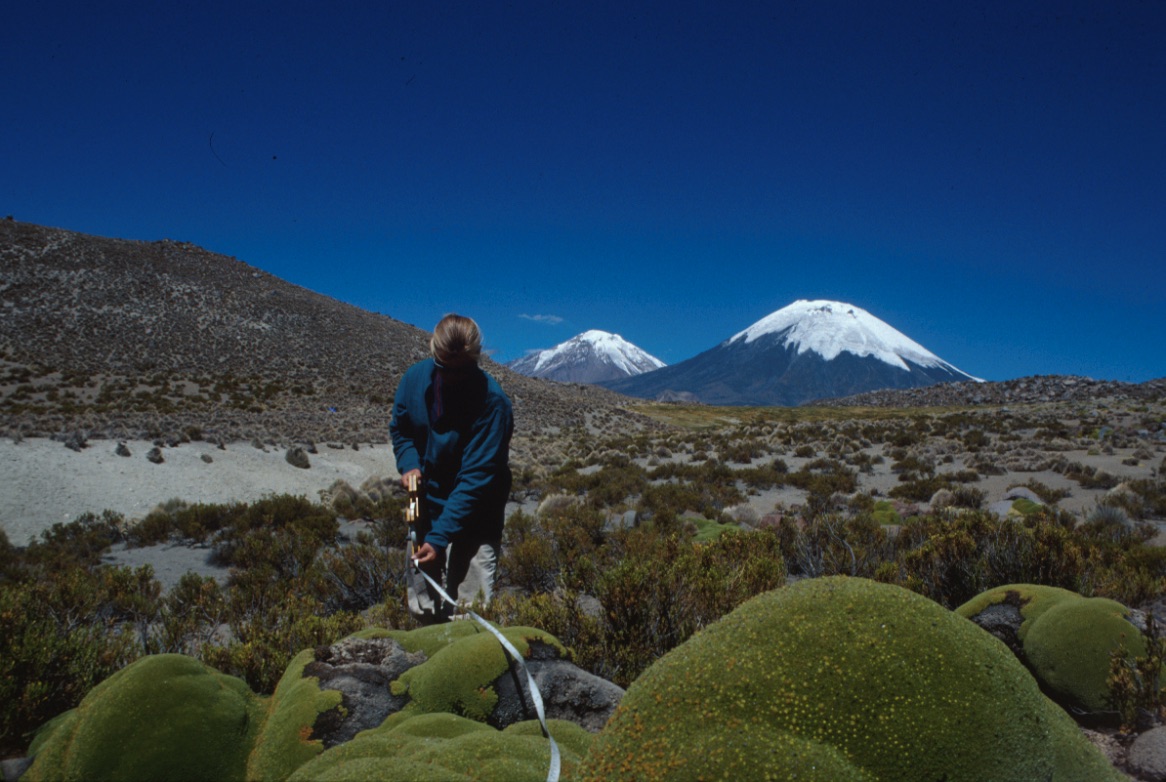Llareta, One of the Oldest Living Plants in the World
This hard-as-a-rock South American cushion plant can live thousands of years.

A llareta found in Bolivia. Photo by Magnus von Koeller/flickr/CC BY-NC-SA 2.0
The photograph above might look digitally rendered, like someone photoshopped an unnaturally bright green sea coral into the middle of a muted desert scene. But that verdant splotch is a real organism—a plant, in fact—that grows at high altitudes along the Andes in South America.
The flora is a type of cushion plant known as Azorella compacta, also called “llareta” in Spanish. “The compacta is really key,” says Cath Kleier, an associate professor of biology at Regis University who’s done three studies on the species in Chile’s Lauca National Park. “[It] really describes the plant—compact. The plant’s canopy is made up of just thousands of really small, little rosettes [leaves] that are at the end of the stem, and they are compacted together so tightly that you could sit on this plant and not fall through the canopy.”
“You can jump up and down on it; nothing happens,” adds Philip Rundel, a distinguished professor of biology at UCLA. “It grows and branches and ramifies and makes this really dense surface.”

Llaretas grow from taproots and are part of the carrot and parsley family, but don’t expect their leaves to be soft to the touch. “They’re almost the texture of a two-by-four,” says Rundel. “You can cut them with a sharp knife, but they’re very woody.” In fact, the plant was once extensively harvested to be burned as fuel, but these days, locals use it more often as tea.
Despite the compactness of their leaves, llaretas’ most noticeable feature may be their size. “They can get huge! Just massively huge!” says Kleier. The biggest one she’s measured was nearly 40 feet in perimeter, but they generally reach approximately 20 feet around, and about 10-16 feet across.
Llaretas tend to grow low to the ground, near and over rocks. They’re attracted to the heat that the rocks absorb during the day and retain through nighttime, says Kleier. In one of her studies, Kleier found that llaretas especially prefer north-facing—and thereby equator-facing—rocks.
One of the highest growing plant species in the world, the llareta generally takes root in the tropical alpine areas of Chile, Bolivia, and Peru at elevations of 14,000 to upwards of 17,000 feet, where there’s a lot of direct sunlight and solar radiation during the day, but near freezing temperatures at night, says Kleier. She found one living above 17,200 feet, “but I suspect that they are higher than that,” she says.

Llaretas could also be among the oldest living plants in the world. While scientists haven’t carbon-dated them yet, one 1978 study estimated the age of a sample of plants at 850 years to 3,000 for bigger ones. For her part, Kleier observed a group of llaretas over the course of 14 years and found that they only grew about a centimeter a year—if at all (the study hasn’t been published yet). That sluggish rate is on par with the 1978 study’s findings, says Kleier.
There’s still a lot about llaretas that we don’t know. Kleier hopes to conduct more research about the plants’ ages, and about a possible correlation between elevation and size. There could be potential for more ethnobotanical uses, too. Kleier says she recently heard of researchers testing the species’ terpenoids—chemical compounds found in the plant—for anti-cancer and HIV-fighting properties.
Chau Tu is an associate editor at Slate Plus. She was formerly Science Friday’s story producer/reporter.